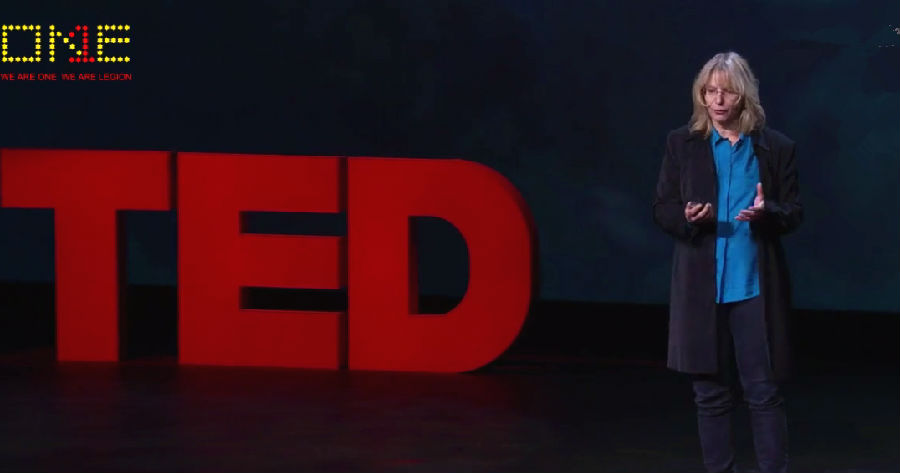Not only that, we're continuing to plant one or two species and weed out the aspens and birches.
不仅如此,我们还在继续种植着那一两种单一的树木,还继续着把山杨和桦树清除出去。
These simplified forests lack complexity,
这种单一的树木种类使森林缺少了多样性,
and they're really vulnerable to infections and bugs.
这让它们在传染病和虫害面前根本不堪一击。
And as climate changes, this is creating a perfect storm
随着气候变化,这也将会为一些极端事件
for extreme events, like the massive mountain pine beetle outbreak that just swept across North America,
带来一场疯狂的风暴,比如刚刚席卷整个北美洲的山松甲虫大爆发,
or that megafire in the last couple months in Alberta.
还有过去几个月在阿尔伯塔的森林大火。

So I want to come back to my final question:
所以现在我想提我的最后一个问题:
instead of weakening our forests, how can we reinforce them and help them deal with climate change?
与破坏我们的森林相反,我们怎么才能让它们变得更强大,怎么才能帮助它们应对气候变化呢?
Well, you know, the great thing about forests as complex systems is they have enormous capacity to self-heal.
其实你们知道吗,森林作为一个复杂的系统,最好的一点就是它们拥有相当强大的自愈能力。
In our recent experiments, we found with patch-cutting and retention of hub trees
在我们最近几个实验中,我们发现小规模的砍伐,把中心树保护好,
and regeneration to a diversity of species and genes and genotypes
物种多样性、基因和基因型多样性的再生,
that these mycorrhizal networks, they recover really rapidly.
加上这些真菌网络的存在,会使森林的恢复速度变得无比迅速。
So with this in mind, I want to leave you with four simple solutions.
所以出于这种考虑,我想提出四个简单的解决方法。
And we can't kid ourselves that these are too complicated to act on.
而且我们一定不能自欺欺人,因为这些做起来其实也挺复杂的。












